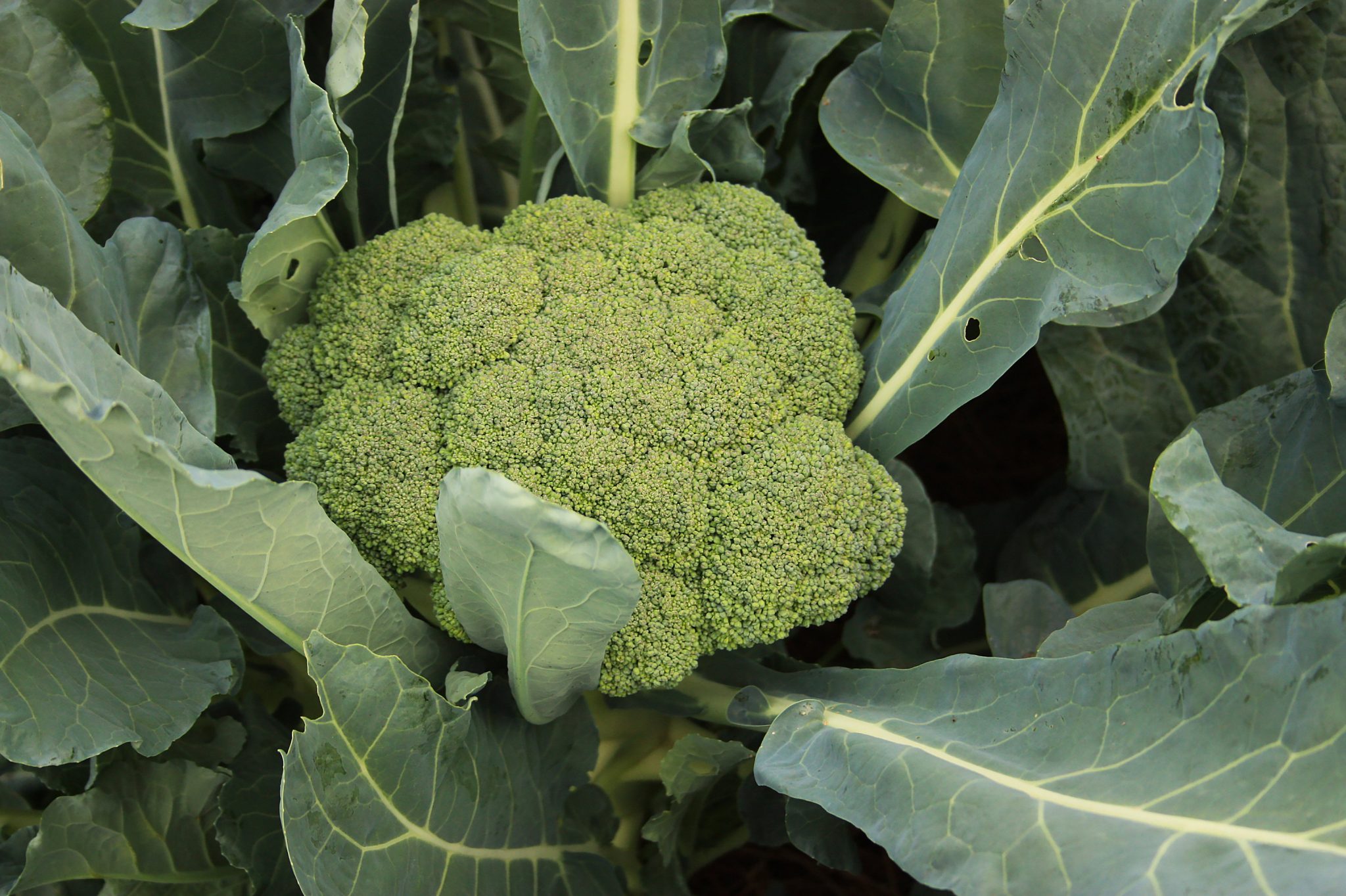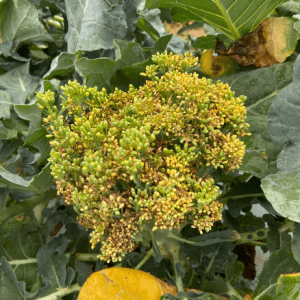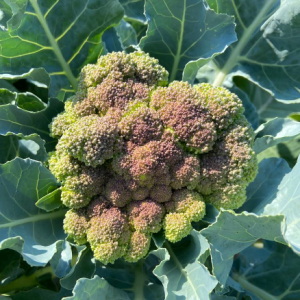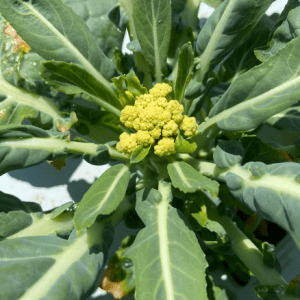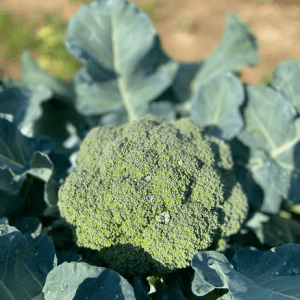Crop Production

Broccoli is one of the highest value vegetable crops in the United States. While California is still the largest broccoli producer in the country, states on the eastern coast have shown potential to change the broccoli industry scenario in the country. This would increase the annual volume of $100 million in the last five years, according to the Eastern Broccoli Project.
Weather variability in the southeastern U.S. is still a challenge to growers, it makes yield and time to maturity difficult to predict. High temperatures during the growing season are the largest challenge. Broccoli is a cool season crop and very sensitive to high temperatures. To produce broccoli in the southeastern U.S. and achieve high quality heads and yield, growers must avoid daily air temperatures that are considered too hot during flowering. Particularly, optimum temperatures for broccoli development ranges between 75 and 85 °F.
Growing Broccoli
In the early season, broccoli plants have an optimum development at air temperatures around 85°F; however, head quality will drop when temperatures are above 85°F during head formation. Heat stress during floral initiation affects the immature inflorescence that leads to structural abnormalities, including deformities that prevent the development of high-quality broccoli heads, uneven bud growth, which produces uneven bead size and uneven heads.
In Alabama, the best planting dates for broccoli should be late summer and fall; however, growers can also grow broccoli during the spring. Optimum planting dates for the fall season ranges from August to early October. Earlier planting dates may be affected by heat stresses and later plating dates may be affected by hard freezes. For the spring season, optimum planting dates for broccoli production will range from February to April. Contrary to the fall season, earlier planting dates may be affected by hard freezes and later plating dates may be affected by heat stresses.
Alabama has optimum conditions for broccoli production. Growers must select varieties that have better tolerance to growing conditions of the state. The most popular broccoli varieties for Alabama are Eastern Crown and Emerald Crown; however, there are many others available. Ultimately, selecting the correct planting date is key to avoid high temperatures during flowering and head formation, which will increase head quality.
Optimum Planting Dates in Alabama by Region
South Alabama
- Spring dates: February 1 – March 1
- Fall dates: August 15 – September 30
North Alabama
- Spring dates: March 1 – April 30
- Fall dates: August 1 – September 1
- Example of heat stress on broccoli head.
- Example of heat stress on broccoli head.
- Example of heat stress on broccoli head.
- Healthy broccoli head.
Food Safety
Don’t forget about food safety. Broccoli is a ready-to-eat commodity that can cause illnesses when consumed raw if contaminated with human pathogens. Implementing food safety practices during growing, harvesting, and post-harvesting is crucial to minimize risks of contamination. On the farm, growers should do the following:
- monitor for animal activity around the fields and near water sources
- assess the quality of the water used for both production and postharvest
- properly use fertilizer of animal origin
- train workers on good handling practices, health, and hygiene
- maintain a cleaning and sanitizing routine for tools, equipment, and facility
- keep records of all practices done on the farm
Having a food safety plan in the farm also help growers to be organized, identify risks, and take corrective measures.

